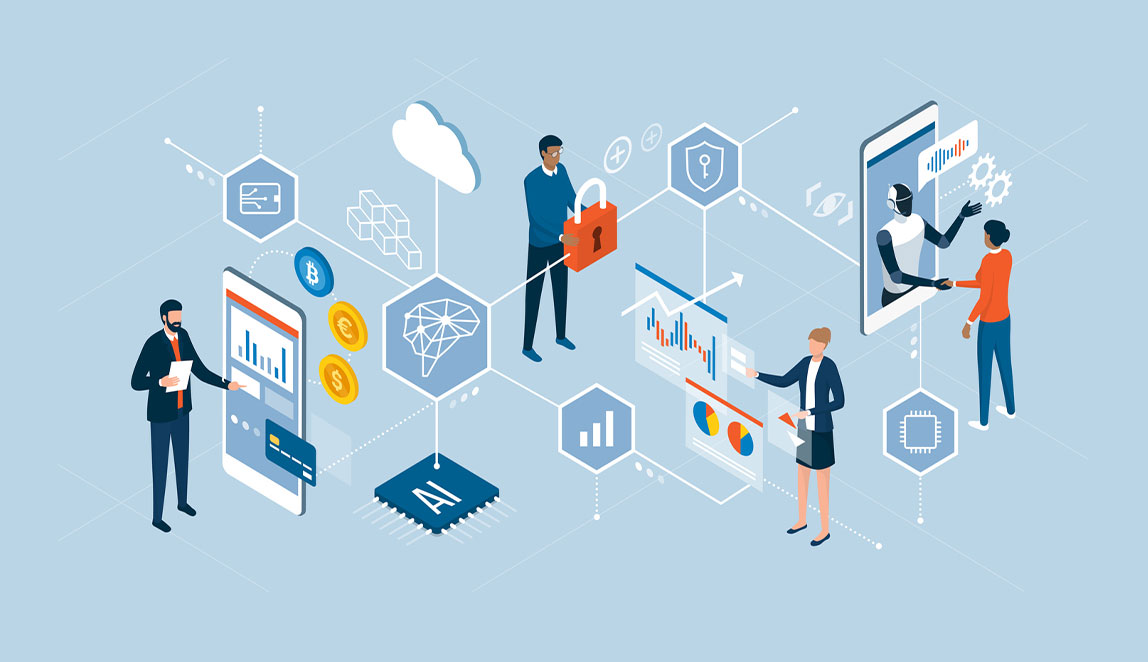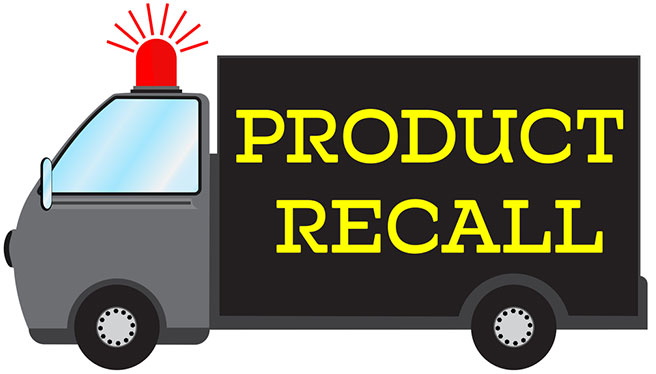Jan 20, 2021 by Mark Dingley
Imagine this – the technology behind bitcoin could improve food traceability. Not sure how that works? You’ve come to the right place.
If you’re a food manufacturer and you’re not familiar with blockchain technology, it’s never too late to get started. Blockchain is the name of the underlying enabling technology that was developed for bitcoin. There’s a growing buzz, however, around how this technology can be used outside of the cryptocurrency sphere to transform the way we do business.
Blockchain’s core attributes mean that it offers significant potential to improve food traceability.
Before we get into that, however, let’s take a closer look at what blockchain is. Basically, it’s a technology that allows users to store and share information across a network in an open virtual space. Users can look at all transactions simultaneously and in real-time.
Blockchain is a “shared, programmable, cryptographically secure and therefore trusted ledger which no single user controls and which can be inspected by anyone” says the World Economic Forum.
At every stage of the journey, information is digitally connected to food products and entered into blockchain. This information could include batch numbers, expiration dates, factory information, farm origination details, processing data, shipping details and storage temperatures.
All users on the network must agree on the information that is captured in each transaction, which is then assigned a digital certificate. This becomes a permanent record that cannot be altered (this is the most important factor of this technology).

Transparency – Its public nature is easily one of blockchains’ biggest benefits. This technology provides provenance, traceability and transparency of information. In a food supply chain, for example, all of the transactions for a single item can be seen and validated at any point in time. This allows every party in the supply chain to have a solid outlook of the food item’s journey – all in the form of a digital ledger provided in the blockchain.

Security – Blockchain technology provides a permanent record of transactions. These are then grouped in blocks that cannot be altered or tampered with. Fraud is made more difficult thanks to transactions being verified and approved by user consensus. Whilst food fraud is made less likely, if it does occur it will be easier to spot. As a result, consumers are reassured that companies cannot change the information (to hide the true origin or movement of products through the supply chain).
Decentralised – The technology provides a neutral open platform – no third party is needed to authorise transactions, instead all participants (both users and operators) must abide by a set of rules. Highly valuable in complex supply chains (where trust is low and compliance difficult to gauge), The Economist has actually dubbed blockchain “the Trust Machine”.
Real-time Information – As blockchain operates on a distributed platform rather than a centralised one, each participant is able to access the exact same ledger records. If information is updated, it’s updated for everyone at the same time. This allows the whole supply chain to be as responsive as possible to any potential food safety disasters and fraud threats that may occur.
It comes as no surprise, then, that blockchain technology could bring myriad advantages to every user within the supply chain – including distributors, growers, processors, regulators, retailers and suppliers.
Imagine if, as a retailer, you could see and validate with absolute certainty where each food item was grown, handled, processed, stored and inspected. Being able to track every stage of its journey to your store. Blockchain technology offers the potential for this to become a reality.
There aren’t any gaps in the history, location or status of a food product when you use blockchain. Instead, you’ll have the whole picture. So if, for example, you become aware of a potentially deadly issue with cantaloupes, you will be able to view the entire history of that melon and track where the issue occurred. And, if necessary, fruit from that specific farm or batch can quickly be recalled.
How quickly exactly? In October 2018, Walmart signed an agreement to test blockchain technology in the exploration of food supply chain traceability and authenticity. Prior to using blockchain, it took the company six days, 18 hours and 26 minutes to trace the mangoes in one of their stores back to the original farm.
Using blockchain, it took Walmart only 2.2 seconds.
Food fraud has been estimated (by PricewaterhouseCoopers) to cost $52 billion globally each year.
There has been increasing occurrences of Australian producers being targeted by food counterfeiting, particularly in Asia and the Middle East – and it’s only getting worse. Our reputation for high quality food is being put at risk by foreign operations who counterfeit our labels and packaging so that they can sell their lesser quality and potentially unsafe products under the Australian name.
Blockchain technology could help to put a stop to this.
In March 2017, Chinese e-tailing giant Alibaba sought PricewaterhouseCoopers help in running a pilot program using blockchain alongside Blackmores in Australia and Fonterra in New Zealand with the sole goal of preventing food fraud.
Should these pilots be successful, Alibaba ANZ managing director Maggie Zhou says that they will form the basis of a global supply chain model for the ecommerce markets of the whole group. This will protect the reputation of its food merchants whilst providing consumers with further confidence when purchasing food online. Christine Holgate, the CEO of Blackmores, believes that the Alibaba plan will help to make her company’s supply chain more visible and transparent to consumers in China.

A common struggle for many food processors and manufacturers is validating the origin of their ingredients. The processor must be able to provide detailed information about what’s in a food product and how it was made if consumers are to trust in its quality and provenance.
Thanks to blockchain, the grower and processor can share information with each other privately and securely; the supply chain will validate this information. This Web-of-Trust system allows participants of the network to evaluate and validate assertions made about their food (including its origins, dietary claims, sustainability and so on).
This system will only work, however, if the data at the source is accurate (if food processors are inputting the correct data). Data is currently stored on paper or in centralised databases, both of which are open to human error and inaccuracies. Sensors are one solution to this challenge – food processors can use them to collect accurate and detailed information, which can then be made available to everyone across the supply chain
Whilst blockchain technology has the potential to really transform the food industry, this will only be possible is everyone participates. If food products are to be traceable from farm to fork, all parties along the supply chain must adopt this technology. It isn’t something that will occur overnight, but with large corporations (like Walmart and IBM) leading the way, it could happen sooner than first thought.
Who would’ve thought that blockchain had the ability to improve food traceability?